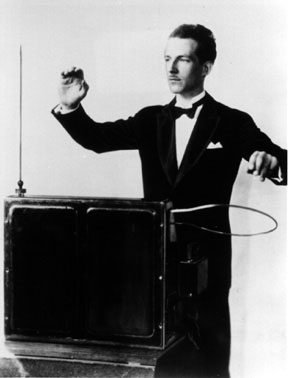
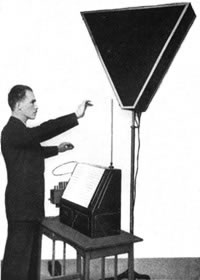
|
The Theremin is one of the earliest electronic musical instruments. It was invented in 1919 by Russian Lev Termen, who became known in the West as Leon Theremin. The Theremin produces a single note whose pitch is controlled by the player's right hand and whose amplitude is controlled by the left hand. The hands never touch the instrument; pitch and loudness are determined by the distance of the hands from the two antennas. |
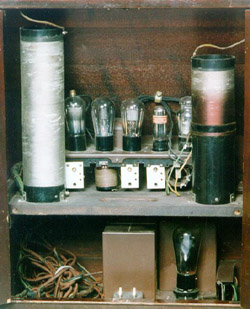
|
At the heart of the Theremin are three radio frequency oscillators. Two of these have their LC resonant circuits connected to external wires or "antennas." The proximity of the performers hand causes the capacitance, and hence the resonant frequency, of the circuit. The third oscillator is tuned to a fixed frequency equal to the undisturbed frequency of the variable oscillators. To create the note, the output of the variable oscillator which is connected to the right hand (pitch) antenna is mixed with the fixed frequency oscillator. The difference frequency then becomes the note of the instrument. The amplitude control oscillator is connected to an FM detector whose output drives a voltage controlled attenuator. For more information, see The Theremin -- How it works |
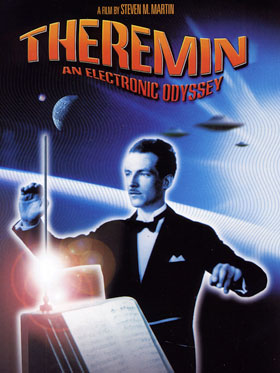
|
The eerie sound of the Theremin has proven irresistable to
movie directors seeking to create a mood of
suspense or impending alien attack.
It is featured in the sound tracks of such classics as
The Day the Earth Stood Still,
It Came From Outer Space,
Spellbound,
Mars Attacks,
Ed Wood,
and, of course
Theremin -- An Electronic Odyssey.
The Theremin was conceived as a serious musical instrument, and in fact has found its way into the works of such serious composers as Percy Grainger, Bohuslav Martinu, Charles Ives, and Edgard Varese. It has also found a niche in the popular repertoire, having been used by such bands as Nine Inch Nails, Led Zeppelin, and Pink Floyd. Contrary to some accounts, a Theremin was not used in the Beach Boys' 1966 recording of "Good Vibrations." Brian Wilson wanted one, but none was available, nor was a musician who could play one. Instead Paul Tanner played his homemade Electro-Theremin or Tannerin, which produces a sound similar to the Theremin, but uses mechanical controls rather than antennas. |
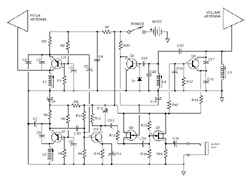
| The circuit of the Theremin is relatively simple, so it has become a fairly popular hobbyist project. If you would like to build your own, or at least see how they have been built, check out these schematics or these other schematics. |